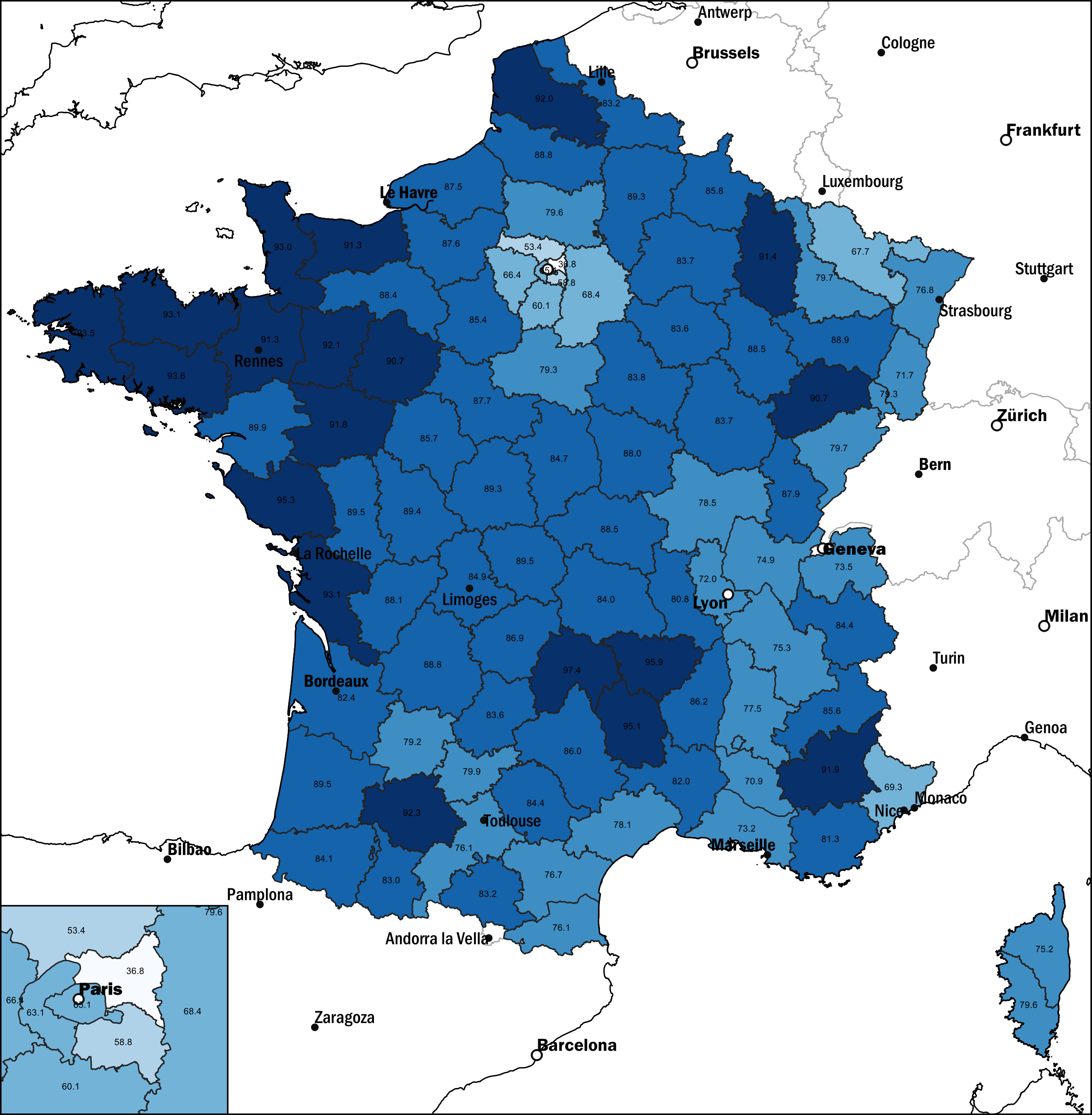Map of French Population Without Migration Background, 2021


Marcus Rodriguez
Historical Geography Expert
Marcus Rodriguez specializes in historical cartography and geographic data analysis. With a background in both history and geography, he brings unique...
Geographic Analysis
What This Map Shows
This map displays the percentage of the French population without a migration background as of 2021. It highlights the demographic makeup of France, illustrating regions where individuals are predominantly native-born and have not experienced migration themselves or through their immediate families. Understanding this demographic aspect is crucial, as it provides insights into the social dynamics and cultural composition of the nation.
Deep Dive into the French Population
The concept of a migration background refers to individuals whose parents or grandparents were born outside of France. In 2021, France was home to a diverse population, shaped significantly by waves of migration over the years. Interestingly, about 25% of the population in France has a migration background, which means that a significant portion of the population identifies with immigrant roots. However, this map specifically focuses on the remaining 75% of the population who do not share this background.
In a country as rich in history and cultural diversity as France, the percentage of individuals without a migration background can reveal much about regional identities and historical settlement patterns. For instance, areas with high concentrations of native-born citizens often correlate with regions that have historically been less influenced by immigration. Rural areas, particularly in the central and northern parts of France, tend to showcase higher percentages of residents without a migration background. This contrasts sharply with urban centers like Paris, Marseille, and Lyon, where the immigrant population is markedly higher due to economic opportunities and historical migration patterns.
The demographic landscape is also affected by France's colonial past, which has led to significant migration from former colonies in North Africa, Sub-Saharan Africa, and Southeast Asia. This complex history shapes the current social fabric of the nation. Additionally, the urban-rural divide plays a crucial role: urban areas tend to be more multicultural and diverse, while rural regions often retain a more homogeneous population base.
Regional Analysis
When analyzing the data by region, the map reveals intriguing patterns. For instance, the Île-de-France region, which includes Paris, shows a lower percentage of residents without a migration background, hovering around 55%. This can be attributed to the region's status as a cultural and economic hub that attracts a diverse population from various backgrounds.
In contrast, regions such as Auvergne-Rhône-Alpes and Bourgogne-Franche-Comté report much higher percentages of native-born individuals, often exceeding 80%. These areas are characterized by their historical stability and lower levels of immigration, reflecting a different social dynamic compared to the bustling streets of Paris.
Interestingly, the map also highlights regions like Provence-Alpes-Côte d'Azur, which, while being a tourist hotspot, boasts a higher percentage of residents without migration backgrounds compared to Île-de-France. This could be due to the region's appeal to both domestic and international travelers, creating a unique blend of cultures without significantly increasing the permanent immigrant population.
Significance and Impact
Understanding the percentage of the French population without a migration background is not merely an academic exercise; it has real-world implications. This data influences policies regarding integration, social services, and community development. As France grapples with issues of identity and multiculturalism, knowing the demographic composition helps inform discussions on national identity, social cohesion, and the challenges of integration.
Moreover, as global migration patterns continue to evolve, the demographic landscape of France will undoubtedly change. Future projections suggest that the percentage of those with migration backgrounds will continue to rise, leading to greater cultural diversity. This shift will challenge traditional notions of French identity and may necessitate new approaches to social policy and community relations.
In conclusion, the map of the French population without a migration background reveals significant insights into the nation's demographic structure. As we move forward, it will be essential to monitor these trends and understand their implications for society as a whole. Have you ever considered how these demographic shifts might impact France's cultural identity in the coming years?
Visualization Details
- Published
- October 10, 2025
- Views
- 18
Comments
Loading comments...